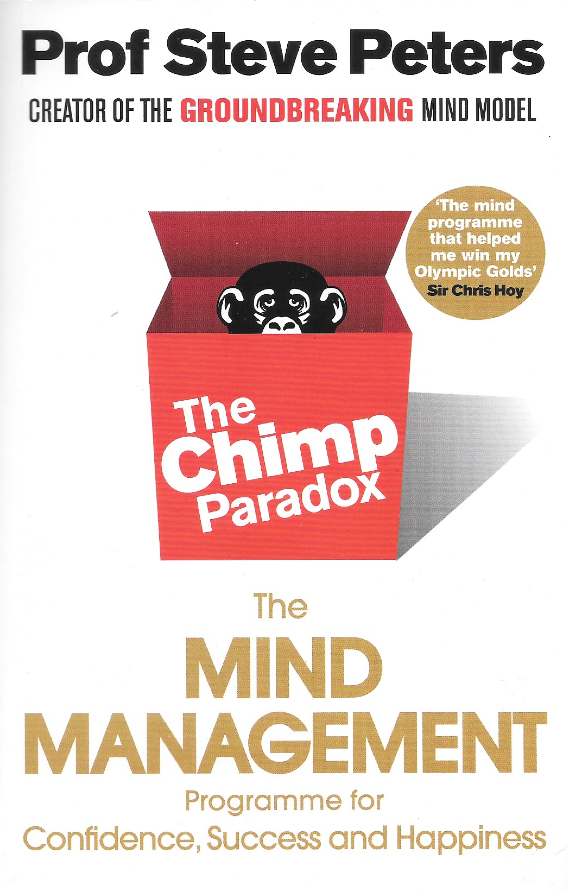The one sentence summary
The Chimp Paradox means that your inner chimp can be your best friend or your worst enemy.
WHAT THE BOOK SAYS

- This book is a mind management model that can help people become more happy, confident and healthy. It helps you to recognise how your mind is working, understand your emotions and thoughts, manage yourself, and become the person you would like to be.
- Everybody has two personas, the human and the chimp.
- The human uses logical thinking, facts & truth, balancing a self-agenda and a society one. Typical features include honesty, compassion, conscience, law-abiding, self-control, sense of purpose, achievement and satisfaction.
- The chimp uses emotional thinking, feelings & impressions. It’s all about perpetuation of the species and survival through drives and, often, a vulnerable stance. Typical drives include troop, ego, dominance, territory, food, power, sex and parental instinct. Fight (attack), flight (run away), and freeze (don’t move) are standard responses.
- The chimp is an emotional machine that will hijack you, if you allow it to. It is not good or bad: it is a Chimp. It can be your best friend or your worst enemy. This is the Chimp Paradox. Whenever an issue arrives, the chimp reacts emotionally and gives an offer (not a command) to the human, who has a choice to accept or reject it. If the human rejects the offer, the human needs to manage an upset chimp. There are three ways to do this:
1. Exercise it: take it to a locked compound, let it all out, listen for as long as it takes and don’t interrupt.
2. Box it: use facts, truth and logic to reason with it.
3. Bananas: feed it distractions or rewards.
- Your brain has a computer with two functions:
1. To think and act automatically for you using programmed thoughts and behaviours.
2. As a reference source for information, beliefs and values.
It makes sense of both the chimp and the human perceptions, and interprets these, coming up with a real world that you can live in: a mixture of society and jungle that is forever alternating.
WHAT’S GOOD ABOUT IT
- Here’s a blueprint for dealing with stress: recognise you are stressed and decide to change your reaction to it; hit the pause button; escape the situation temporarily; get into helicopter mode to gain perspective; formulate a plan; reflect on it and activate it; smile.
- Most of us have gremlins (useless, destructive behaviours). For example, saying yes to everything we are asked to do. These need to be replaced with helpful autopilots by analysing why we do them: what do you believe saying no to someone will imply about you? What are the consequences of saying no to someone? Use your computer to work it out calmly.
- Overall, remove stress and disappointment by taking this approach:
- “I will start from where I am and with what I have got.”
- Not: “I will start from where I want to be and with what I want to have.”
- The latter always ends in disappointment.
- Remember: You always have a choice.
WHAT YOU HAVE TO WATCH
- Not much, but it could potentially have been a bit shorter.
